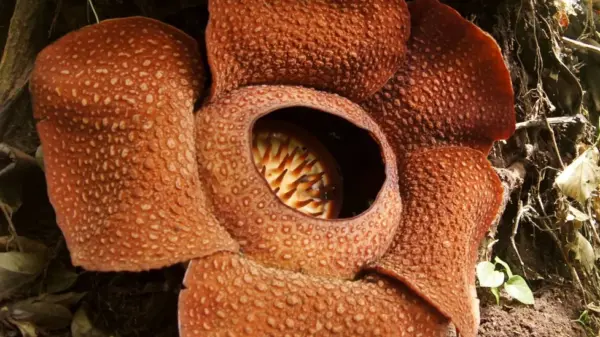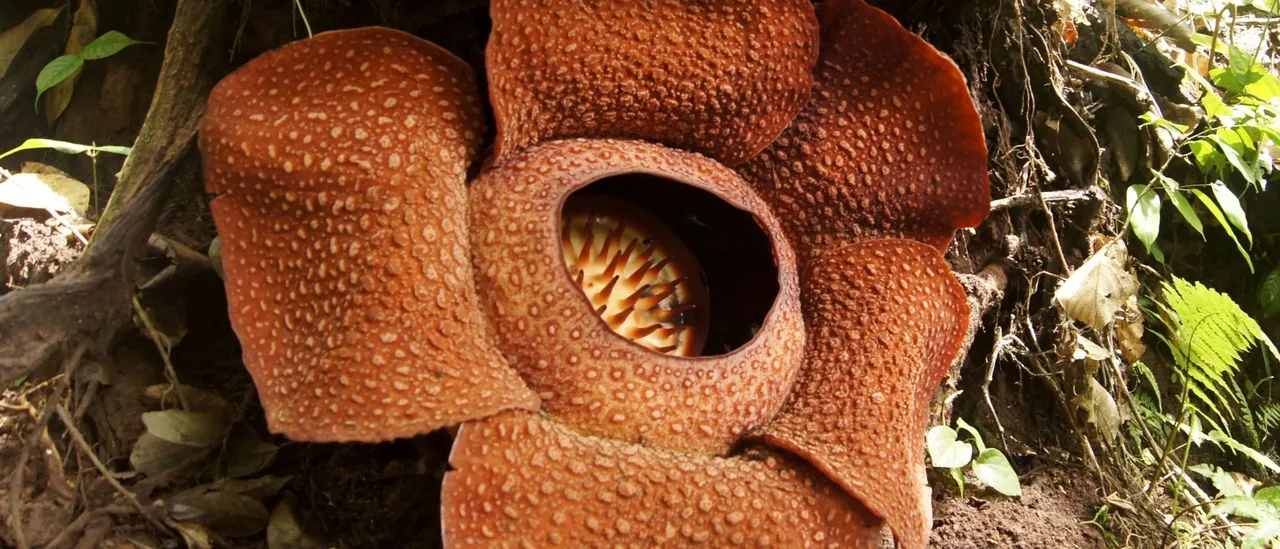In a remarkable ecological discovery, a team of researchers in Indonesia has found the rare flower Rafflesia hasseltii after a 13-year search through the dense rainforests of Sumatra. Conservationist Septian Andriki experienced an emotional moment as he encountered the flower, which is known for its striking appearance and unique characteristics.
Andriki, overwhelmed by the sight, described the experience as life-changing. “When I saw her start blooming, I just broke down,” he recounted, as reported by ABC News Australia. The team had embarked on a challenging expedition, traversing the tiger-inhabited jungles of Sumatra for nearly 24 hours, following a tip-off from a local ranger.
Significance of the Discovery
This discovery marks a significant achievement in botanical research, as no one had observed this species in the wild for over a decade. The Rafflesia genus, often referred to as the stinking corpse lily, includes several species, but Rafflesia hasseltii is among the rarest. Its flowers can grow up to 3.3 feet in diameter and weigh more than 13 pounds, captivating researchers and nature enthusiasts alike.
Chris Thorogood, deputy director of the University of Oxford Botanic Garden and a member of the expedition, documented the poignant moment when Andriki found the flower. The emotional footage, which captured Andriki’s tears of joy, quickly gained traction online, highlighting the passionate efforts of those involved in the search.
The Journey to Discovery
The team faced numerous challenges during their quest, including the risk of tiger encounters and the difficulties posed by the rugged terrain. Andriki reflected on the ordeal: “After 13 years, a 23-hour journey, risking tiger attacks, nearly dead phone batteries, I couldn’t talk. I just cried.” This perseverance underscores the dedication of researchers working to uncover the mysteries of the natural world.
The Rafflesia flowers are not only significant for their size and rarity but also for their ecological role. As parasitic plants, they thrive within the vascular systems of host vines, making their life cycle and interaction with their environment a fascinating subject for study.
This discovery serves as a reminder of the importance of conservation efforts in protecting unique ecosystems and the species that inhabit them. As scientists continue to explore the rich biodiversity of regions like Sumatra, findings like these inspire hope for the future of rare and endangered plants.
The journey taken by Andriki and his team illustrates the lengths to which researchers will go to advance our understanding of nature. Their emotional and physical commitment has not only led to a rare find but also reignited interest in conservation and biodiversity in Indonesia.







































































